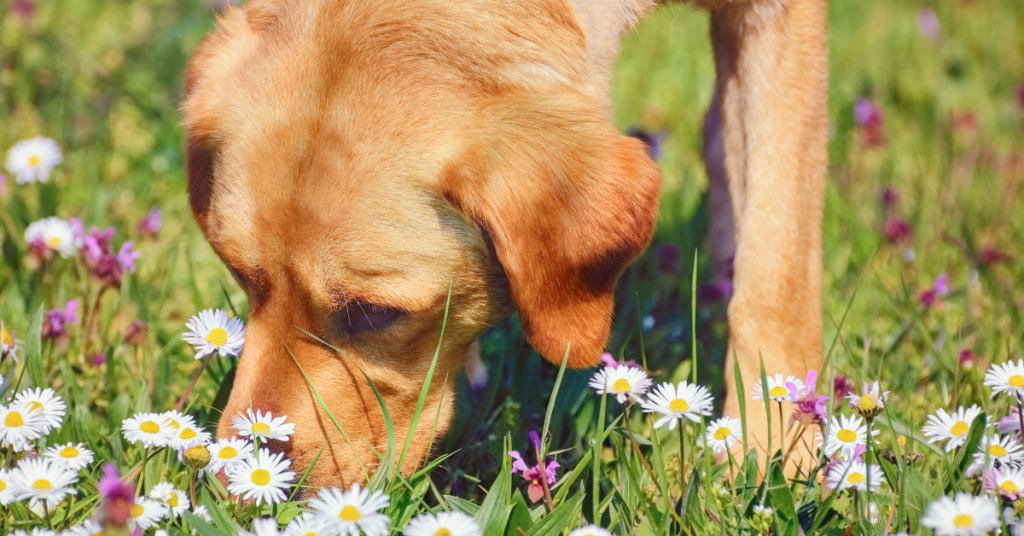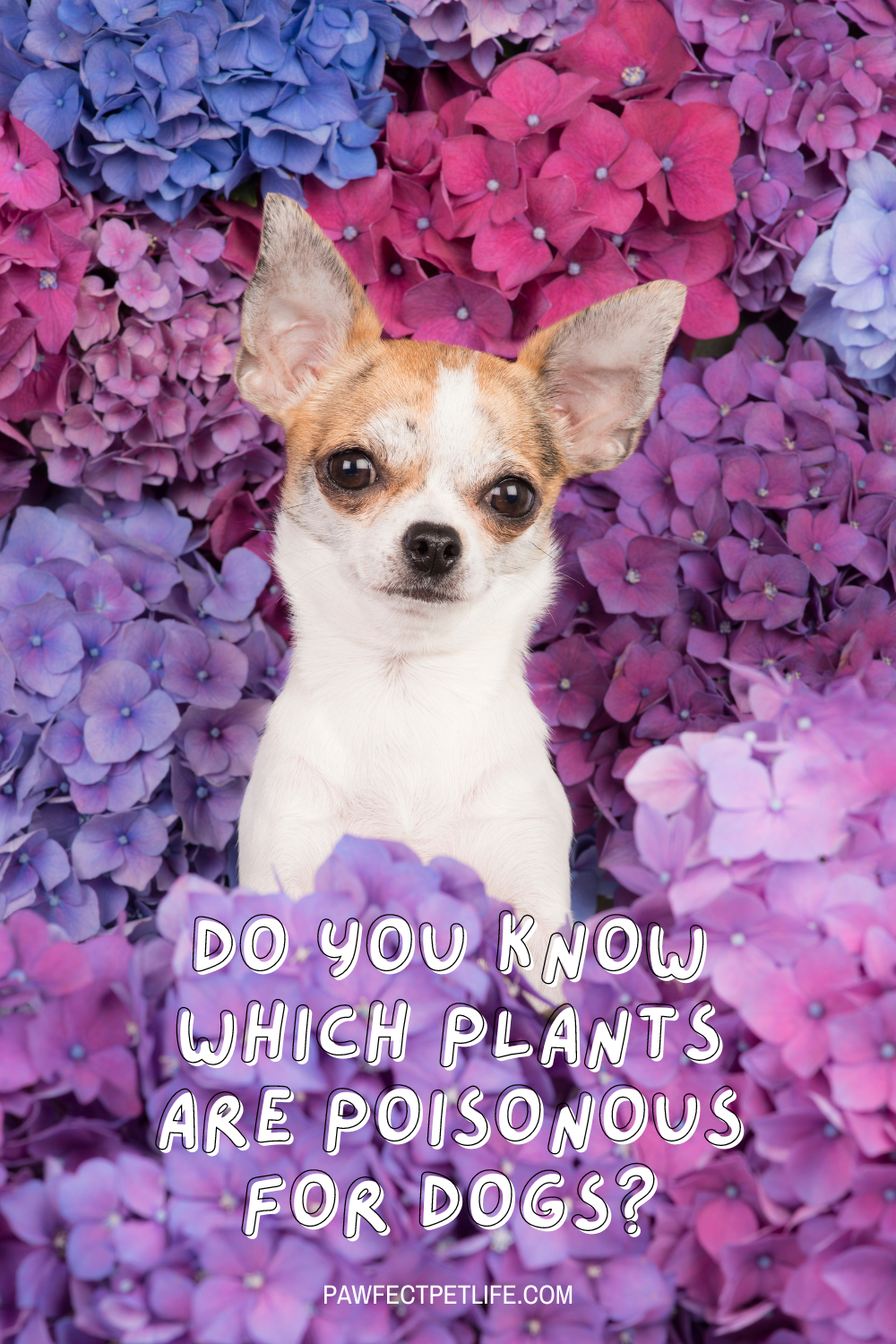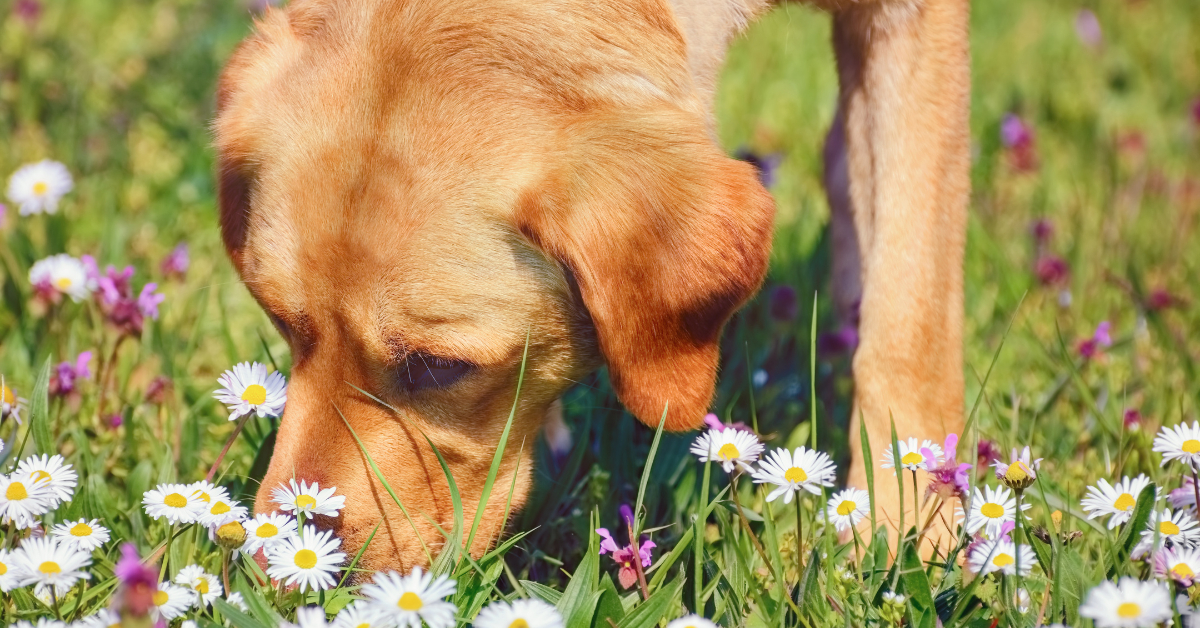The content on this site may include affiliate links. As an Amazon Associate I earn from qualifying purchases. This means that, at zero cost to you, we will earn an affiliate commission if you click on one of the links and buy something.
🌿🐾 Keep your dog safe from poisonous plants! Whether you’re a green-thumbed gardener or just love a few potted plants, some can be harmful to your furry friend. Learn how to spot and avoid potential dangers in your garden. 🚫🌸

We all love sprucing up our spaces with greenery, but did you know some plants could spell trouble for your furry best friend? Whether you’re a plant enthusiast or just like a few pots on your porch, it’s crucial to watch out for potential hazards. From shrubs to trees and those pretty garden blooms, some can give your dog a serious case of the ickies – or worse, lead to a trip to the emergency vet. If you suspect your pup’s been sampling something suspect, don’t delay! Give your vet a shout ASAP, describing what they’ve eaten and any funny business they’re showing.
Flowers and Bulbs that are Poisonous to Dogs
Autumn Crocus
Watch out for these pretty fall bloomers! They pack a punch with colchicine, a toxin that can wreak havoc on your pup’s insides. We’re talking severe vomiting, tummy trouble, kidney and liver issues, and even respiratory failure. The scary part? Symptoms might take a few days to show up, so if your dog has a nibble, call the vet pronto!
Begonia
Begonias are a container garden favorite, but they’re not so friendly to dogs. If your furry friend decides to munch on these, they could end up with a sore mouth and trouble swallowing.
Chrysanthemum
Chrysanthemums are garden classics, but they hide lactones and pyrethrin that can upset your dog’s stomach. While they’re not deadly, they can cause vomiting, diarrhea, drooling, skin rashes, and a wobbly walk if ingested.
Daffodil
These sunny flowers might brighten your day, but they’re bad news for dogs. Eating any part of a daffodil, especially the bulb, can lead to severe vomiting, drooling, tremors, breathing problems, seizures, and even heart issues.
Daisies
Common as they are, daisies can be troublesome for dogs. They contain sesquiterpene lactones, which can upset a dog’s stomach, especially if they eat a lot. Think vomiting and diarrhea – not a good time for anyone.
Foxglove
Tall, stunning, and seriously dangerous, foxgloves are totally toxic to dogs. Every part of this plant, from the seeds to the petals, can cause heart failure and even death. Definitely one to keep out of reach!
Geranium
Though they look lovely in pots, geraniums are not dog-friendly. If your dog takes a bite, they could end up feeling lethargic, with low blood pressure, skin rashes, and a loss of appetite.
Iris
Irises are another beauty that can cause trouble. Munching on any part of this plant can result in skin irritation, drooling, diarrhea, vomiting, and a tired pup.
Lily
Lilies are tricky – with so many types, it’s hard to know which ones are dangerous. Some, like daylilies, are super toxic to cats but only cause tummy upset in dogs. Others, like calla lilies, can burn and irritate a dog’s mouth and stomach. Symptoms range from mild to severe, so it’s best to keep all lilies out of paw’s reach.
Lily of the Valley
These delicate beauties can cause some serious issues if ingested. Look out for symptoms like vomiting, diarrhea, a slow heart rate, and irregular heartbeats.
Tulip and Hyacinth
While tulips and hyacinths brighten up early spring, their bulbs are particularly toxic to dogs. If your dog digs in and eats them, they might experience mouth and esophagus irritation, drooling, and vomiting. Eating lots of bulbs could lead to a racing heart and trouble breathing. With prompt vet care, though, most dogs bounce back just fine.
Shrubs and Plants That Are Poisonous to Dogs
Aloe Vera
While we love aloe vera for soothing our skin, it’s a different story for dogs. The saponin compounds in the plant can make dogs quite sick if they decide to snack on it. Munching on the whole plant can lead to tummy troubles like vomiting and diarrhea. Aloe gel on its own is fine, but the whole leaf includes aloe latex, which is the culprit behind the toxicity.
Azalea and Rhododendron
These popular landscaping beauties are bad news for dogs. Just a few leaves can cause severe issues like vomiting, diarrhea, drooling, paralysis, shock, coma, and even death. Yikes! Keep your furry friends far away from these plants.
Holly
Whether it’s American, English, Japanese, or Christmas holly, they’re all risky for dogs. The spiny leaves can cause vomiting, diarrhea, and injury to the gastrointestinal tract. If your dog nibbles on holly, you might see them lip-smacking, drooling, and shaking their head – not a pleasant sight.
Hydrangea
These lovely blooms hide a toxic secret in their flowers and leaves. If your dog ingests hydrangea, they could end up lethargic, with vomiting, diarrhea, and other stomach issues. Best to admire these from afar!
Ivy
Ivy might be a common sight in gardens, but it’s not safe for dogs. While not usually deadly, certain types of ivy can cause excessive drooling, vomiting, diarrhea, a swollen mouth and tongue, and even difficulty breathing if your pup takes a bite.
Oleander
A favorite in ornamental gardens, oleander is highly toxic to both humans and dogs. Every part of this plant is dangerous. If your dog ingests the flowers or leaves, they could suffer from extreme vomiting, an abnormal heart rate, and even death. Other warning signs include tremors, drooling, seizures, and weakness.
Peony
These gorgeous flowers contain a toxin called paeonol in their bark. Eating large amounts can cause your dog to vomit and have diarrhea. Not fun for anyone involved!
Sago Palm
This one is a biggie. Sago palms are extremely toxic to dogs, especially the seeds. Just a few can cause acute liver failure. Symptoms to watch for include vomiting, diarrhea (sometimes with blood), loss of appetite, and nosebleeds. If you have this plant around, make sure it’s completely out of reach of your furry friends.
Trees That Are Poisonous to Dogs
Black Walnut
The tree itself is pretty harmless, but those nuts that drop to the ground? Not so much. They decay quickly and get moldy, which can upset your dog’s stomach and even trigger seizures if ingested. Yuck!
Chinaberry
This tree is packed with toxins from the berries to the leaves, bark, and flowers. If your dog nibbles on any part of it, they could end up vomiting, with diarrhea, or worse – facing weakness, a slow heart rate, seizures, and even shock. Definitely one to keep off your dog’s menu.
Fruit Trees
Watch out for those fruit trees like plums, apricots, peaches, and avocados. The pits and seeds of cherries and apples are packed with toxins and can also be choking hazards. Even if your dog just munches on the fruit, eating too much can lead to a nasty bout of diarrhea.
Horse Chestnut (Buckeye)
This tree is a big no-no for dogs. It contains saponin, which causes vomiting, diarrhea, and dilated pupils. It also messes with the central nervous system, leading to convulsions and even coma. Definitely steer clear!
Japanese Yew
All varieties of Japanese Yew, from the tiny shrubs to the towering trees, are seriously dangerous for dogs. The toxins can be fatal, causing tremors, vomiting, difficulty breathing, and seizures. They might be pretty with their bright green leaves and red berries, but they’re a no-go for homes with dogs.
Other Nut Trees
As a general rule, nuts aren’t dog-friendly. Trees like almond, pecan, hickory, and walnut drop nuts that can cause gastrointestinal issues and even intestinal blockages if your dog decides to chow down. Keep an eye out and make sure your pup avoids these nutty dangers.
My Dog Ate a Poisonous Plant — What Should I Do?
Uh-oh! If you suspect your pup has munched on something toxic, don’t panic. Here’s what you need to do:
- Call for Help: Get in touch with your vet, an emergency vet clinic, or the Pet Poison Helpline at 855-764-7661. They’re the experts and can give you the best advice.
- Identify the Culprit: Try to figure out what plant your dog ate. Take a sample or snap a photo of the plant. If there’s vomit (gross, but necessary), collect it in a plastic bag – it can help with the diagnosis.
- Gather Info: When you talk to the vet or the helpline, be ready to share details. They’ll need to know the suspected plant, the time your dog ate it, your dog’s weight, and any symptoms you’ve noticed.
- Don’t Induce Vomiting: Seriously, don’t make your dog throw up unless the vet specifically tells you to. Some plant toxins need special treatments, and vomiting can sometimes make things worse.
- Forget the Instinct Myth: There’s a myth that dogs instinctively avoid poisonous plants. While wild animals might have some natural avoidance, our furry friends do not. They can’t tell the difference between safe and unsafe plants, so it’s up to us to protect them.
Stay calm and act quickly – your swift response can make all the difference in keeping your dog safe and sound!
Prevention is Better Than Cure: How to Keep Your Pup Safe in Your Yard
Keeping your furry friend safe starts with a little yard TLC. Here’s how to make your outdoor space a dog-safe haven:
- Regular Yard Inspections: Take a good look around your yard regularly. Identify any plants that could be dangerous to your dog. It’s like a scavenger hunt, but with safety in mind!
- Limit Access: If you find any risky plants, restrict your dog’s access to them. Fencing off areas or using barriers can work wonders. If some plants are particularly stubborn, it might be time to call in a landscaper for help.
- Consult the Pros: When in doubt about a plant’s toxicity, don’t hesitate to seek professional advice. Your vet or a pet poison hotline can provide the guidance you need.
A little prevention goes a long way in keeping your pup happy and healthy. Regularly surveying your yard and taking action on any potential hazards can help ensure your furry friend enjoys their outdoor adventures safely!

